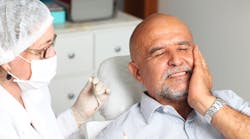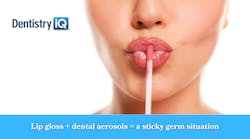An increase in DIY dentistry and home care has made headlines over the past several years, owing largely to social media trends that include using Magic Erasers for whitening, filing teeth to reshape them, and using rubber bands or dental floss to straighten teeth.
But a report on US oral care trends indicates that many Americans are turning to oral home treatments not for the sake of whiter or straighter teeth, but due to their lack of access to necessary dental care.
According to the report, Dental Danger: Home Remedies to Avoid When Awaiting Care by CareQuest, more than half of US adults don’t regularly access the oral health-care system, either by choice or due to barriers to receiving care. Such lack of access has led to an uptick in people seeking DIY solutions for toothaches, cracked or broken teeth, swollen or bleeding gums, and chronic xerostomia—with home remedies ranging from safe, or at least temporarily effective, to downright dangerous.
The report was compiled from data from CareQuest’s State of Oral Health Equity in America survey and found that fully half (50.2%) of the respondents who reported experiencing an oral health problem in the last 12 months used a home remedy for their issue.
Safe vs. dangerous home remedies
The report includes a breakdown of the many types of home remedies along with their popularity among respondents, as well as their safety and efficacy.
“Safe” home treatments are considered “temporarily effective for providing pain relief without exacerbating the oral condition or causing additional pain or infection and might be recommended by an oral health professional as a temporary solution to an oral health symptom.” They include saltwater rinse, hydrogen peroxide rinse, clove oil, temporary filling paste, over-the-counter analgesics, garlic poultice, heat compress, cold compress, and over-the-counter numbing agents. The majority of home remedies used by survey respondents (75%) are considered safe for short-term use.
You might also be interested in: Americans are not getting the dental care they need: New survey
However, 25% of respondents’ home remedies are considered dangerous—one not proven effective, with the potential to have adverse systemic or oral health effects, and that would not be recommended by an oral health provider. These include tobacco poultice, pain medication prescribed for another purpose, illegal narcotics, a needle to lance a gum abscess, aspirin powder applied to the gums, and alcohol/spirits.
Other report insights include:
- Respondents who hadn’t seen their dentist in the last two years were 10% more likely to use dangerous home remedies than those who had a more recent dental visit
- Smokers used one or more dangerous home remedies twice as often as those who don’t smoke
- Compared with other age groups, respondents in the 30-44 group were 13% more likely to use dangerous home remedies
Access CareQuest's report: Dental Danger: Home Remedies to Avoid When Awaiting Care
About the Author
Elizabeth S. Leaver
Digital content manager
Elizabeth S. Leaver was the digital content manager for Endeavor Business Media's dental group from 2021-2024. She has a degree in journalism from Northeastern University in Boston and many years of experience working in niche industries specializing in creating content, editing, content marketing, and publishing digital and magazine content. She lives in the Boston area.


